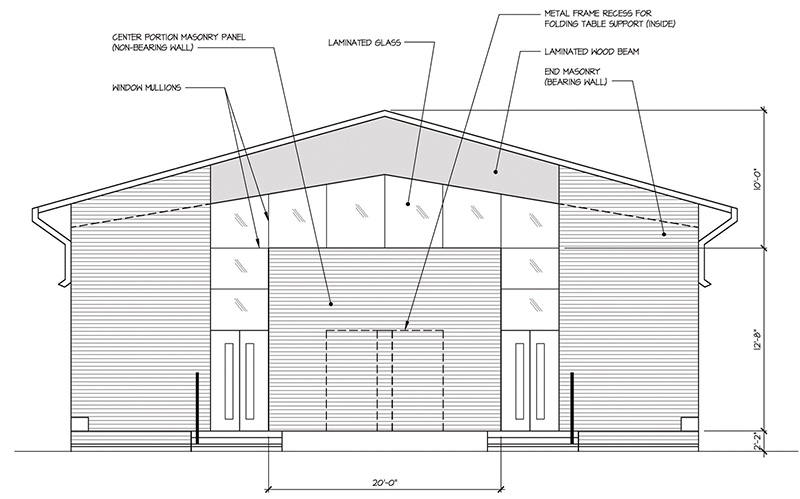Recommitting to safety of the public.
Earlier this summer, while traveling in New York’s Hudson Valley, I stopped at East Coldenham Elementary School. It was a quiet summer day. People came and went while I spent a few moments sitting on a bench in a small memorial garden near the front entry of the building. I consider my visit to be a structural pilgrimage. On November 16, 1989, a strong straight-line wind, sometimes called a microburst or derecho, hit the building’s south face during lunchtime. The central portion of the cafetorium wall collapsed, or blew in, on top of dozens of children. In the catastrophe and its aftermath, a total of 10 children lost their lives, and 18 others were injured.
The events of that horrible day are probably incomprehensible to many people. Some might consider it to have been an “act of God.” Some may think of it as a testament to the unbridled and unpredictable power of severe weather events. But to structural engineers, it represents much more. We should not turn away from the lessons of the East Coldenham disaster.

The collapsed wall was the non-load-bearing gable end of a long section of building with a shallow double-pitched roof. At the center of the wall was a rectangle of masonry roughly 20 feet wide and 13 feet high, bearing on a foundation wall and surrounded on both sides and across the top by window glazing and aluminum mullions. There were no wind columns, wind girts, or lateral braces. Apparently, when the building was constructed in 1959, neither the structural engineer nor the architect designed any specific mechanism to resist strong wind loading on the wall.
Structural engineering practice and building codes have greatly evolved over the past 60-plus years. Certainly, today, such a design omission would be considered an act of malpractice. Still, out of respect for the children, families, and community of East Coldenham, engineers might consider the following takeaways:
Engineers should design holistically, collaborating with the rest of the design team, rather than defaulting to “siloing” or designing only the parts and pieces for which we are 100% responsible. This leads to more coordinated projects and reduces the possibility of gaps in the design. While wind loading is certainly the purview of the structural engineer, other design aspects such as conditions of structural thermal bridging should be assessed, to prevent not only energy loss but to reduce the potential for condensation, which could lead (and has led) to corrosion and compromise of structural elements.
When performing structural condition reviews of existing buildings, engineers must realize that there are buildings that may contain still-undetected structural flaws. As buildings continue to age and, in some cases, deteriorate, and the likelihood of experiencing large-magnitude sporadic snow, wind, or seismic loads increases, structural deficiencies will make themselves apparent. The East Coldenham building held its dangerous secret for 30 years. Let’s try to identify these flaws before another catastrophe hits.
The public’s implicit trust in the safety of buildings and other structures that they live, work, and learn in every day lies in the hands of the structural engineering community. Let’s do everything we can to honor that trust.
Such important, tragic, and instructive stories are not shared within the engineering community nearly enough.
Lest East Coldenham be dismissed as an anachronistic anomaly, in 2009, I came upon another flawed cafetorium wall in an elementary school. Built in 1993, it measured 80 feet long and 25 feet high and was constructed of eight-inch hollow, unreinforced CMU and an independent exterior brick wythe. Competence check: Does that make you raise your eyebrows? The wind resistance of this wall was well below code requirements, yet there it was – built and occupied – with children. Fortunately, we were able to call attention to this problem and reinforce this deficient wall before a too-strong wind occurred. It seems like we, as a profession, still haven’t learned the lesson well enough.
I returned from my pilgrimage to East Coldenham and recommitted to our profession’s fundamental canon as engineers: to hold paramount the safety, health, and welfare of the public. There are precious lives at stake. We have to do better.■
